Water, health, heart, and art: transforming health centres in Burkina Faso
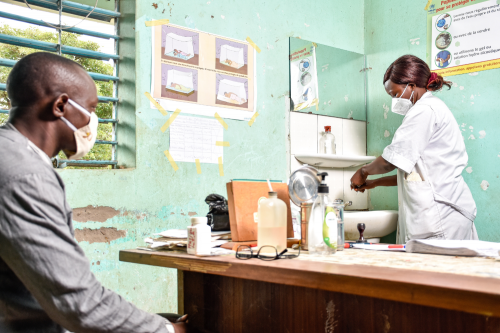
If you want to go fast, go alone. If you want to go far, go together.
-African proverb
In the Cascades region of Burkina Faso, the Saniya So+ Project brought us to the hustle and bustle of staff attending to Banfora district’s health centres.
It’s important to note that adequate water, health, and hygiene services are essential to health care service delivery. Despite that crucial fact, 1 in 4 of our world’s health care establishments lacks access to basic water services, affecting some 1.8 billion people globally.1
And the issue doesn’t arise from a simple dearth of infrastructure, either. Even when an establishment has access to the necessary supplies and facilities—on top of staff that is aware of hand hygiene behaviours—61% of health workers still don’t practise proper handwashing techniques.2
That’s why, in 2020, the One Drop Foundation and Espace Culturel Gambidi—social art partners for a decade already—teamed up to deliver the Saniya So+ Project. Since, we’ve laid the groundwork for sustainable change in 17 health centres in Banfora by ensuring that infrastructure-related investments are attached to Social Art for Behaviour Change™ (SABC) activities.
Two years later, this short-term project is wrapping up as a total success. Today, we want to look back on the positive ripple effects created by water, art, and emotions to see exactly how they’ve improved living conditions for 160,000 Banfora residents.
Keep reading to learn more about the social art agents and innovations that led to this transformative experience in Burkina Faso.
Slam poetry for health
Twelve health workers and 5 social artists were able to move the hearts and minds of their peers and patients through hygiene-based slam poetry.
Dr. Ouedraogo—an artist and slam poet himself—motivated his peers and spared no effort in helping others to see just how powerful the combination of art and handwashing with soap and water can be for the proper upkeep of sanitary installations.
The co-creators’ deep commitment to this project resulted in 2 slam pieces being created (including Je reviens de loin), which was set to music by a group of social artists called Corona kaa ta and broadcast on the airwaves of Radio Munyu Banfora. Learn more about what happened behind the scenes of this activity thanks to a podcast hosted by a key project participant.
Through the eyes of the mystery user
Oftentimes, it’s difficult to ascertain whether health workers are complying with handwashing protocols. To meet this pressing challenge, the project’s mystery users3 activity brought a group of social artists together to blend into the scenery at local health centres and win over staff hearts.
Posing as patients, the artists observed staff behaviours on location, on a normal workday. Then they made the staff aware of what they picked up on, creating prompts for debate among staff who recognized themselves, laughed, and came together to devise solutions that were tailored to their specific workplace.
The 54 sessions carried out in the health centres of Banfora have resulted in 40 health workers collectively engaging in ensuring quality care. In the form of a podcast, a key player in the project tells us about the lived experience and the advantages of the mystery user approach.
A picture’s worth a thousand words
In any health establishment, each and every individual has an important role to play in maintaining a healthy environment. To keep this top of mind for staff, the Saniya So+ Project tapped into artistic photography—not only as an end goal, but as a creative process that was able to both highlight and contextualize health workers practising healthy behaviours on site.
Behind the lens, staff members were able to demonstrate how they tackle sanitation-related challenges. Mariam, who’s in charge of maintenance services at a participating health centre, had this to say:
“I want health centre users to get inspired by the photos, since each one is packed with so much meaning. […] Once enough awareness is raised in the community, people may make more of an effort to keep things clean, which in turn improves the quality of care we deliver.”
In total, some 200 photo portraits were taken and exhibited in 17 Banfora health centres, putting a spotlight on staff commitment to keeping the workplace a healthy one.













Songs, stories, murals, funny videos, and more spelled success for this project.

Songs, stories, murals, funny videos, and more spelled success for this project.
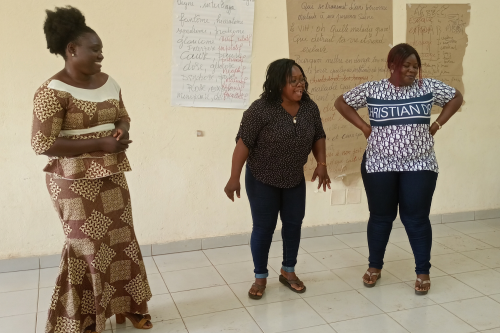
Songs, stories, murals, funny videos, and more spelled success for this project.
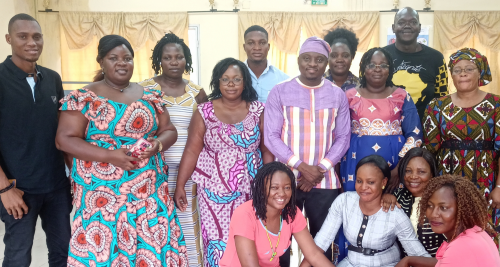
Songs, stories, murals, funny videos, and more spelled success for this project.
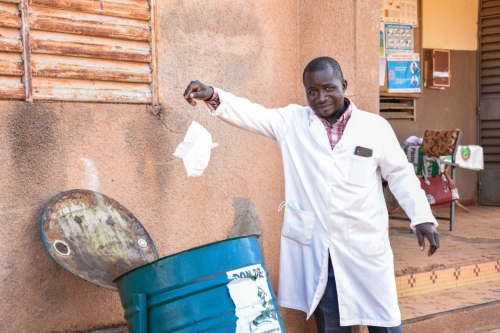
Songs, stories, murals, funny videos, and more spelled success for this project.
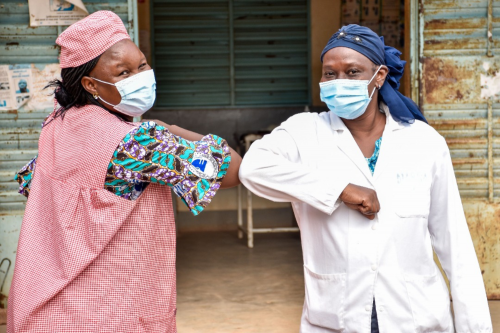
Songs, stories, murals, funny videos, and more spelled success for this project.
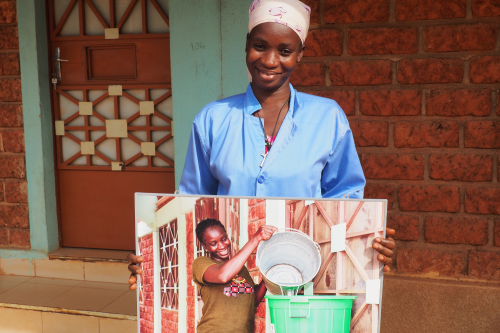
Songs, stories, murals, funny videos, and more spelled success for this project.
Alongside infrastructure work and developing local entrepreneurship, social art has catalyzed community engagement to improve the health and well-being of the people of Banfora.
New installations in the maternity ward—including 16 latrine units, 45 sinks, and 10 washing and drying areas—will be maintained by the 136 health workers who were trained over the course of the project.
Additionally, the creation of majoritarily female entrepreneurship associations has served to strengthen the water, sanitation, and hygiene value chain in health establishments via the production of soap and menstrual hygiene kits.
Combined, these activities have enabled the roll out of inclusive, equitable, and sustainable water, sanitation, and hygiene services for more than 160,000 people, leaving in their wake a tight-knit collaborative network of key actors who will continue to carry the torch and keep the commune of Banfora healthy.
The One Drop Foundation is especially grateful to Espace Culturel Gambidi, the Conrad N. Hilton Foundation, and all the local partners who contributed to this project’s fabulous success. In the coming years, One Drop and our partners will pursue our work in Burkina Faso via new initiatives that harness the power of water and art to create long-term impacts on the health and well-being of thousands more people.
1. WHO, Global progress report on WASH in health care facilities: Fundamentals first
2. WHO, Health care without avoidable infections: The critical role of infection prevention and control
3. This exercise in invisible theatre was inspired by the mystery shoppers used by retailers to improve customer service.

